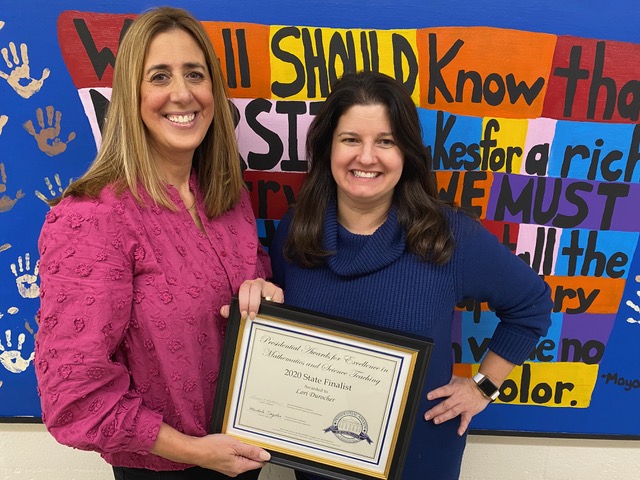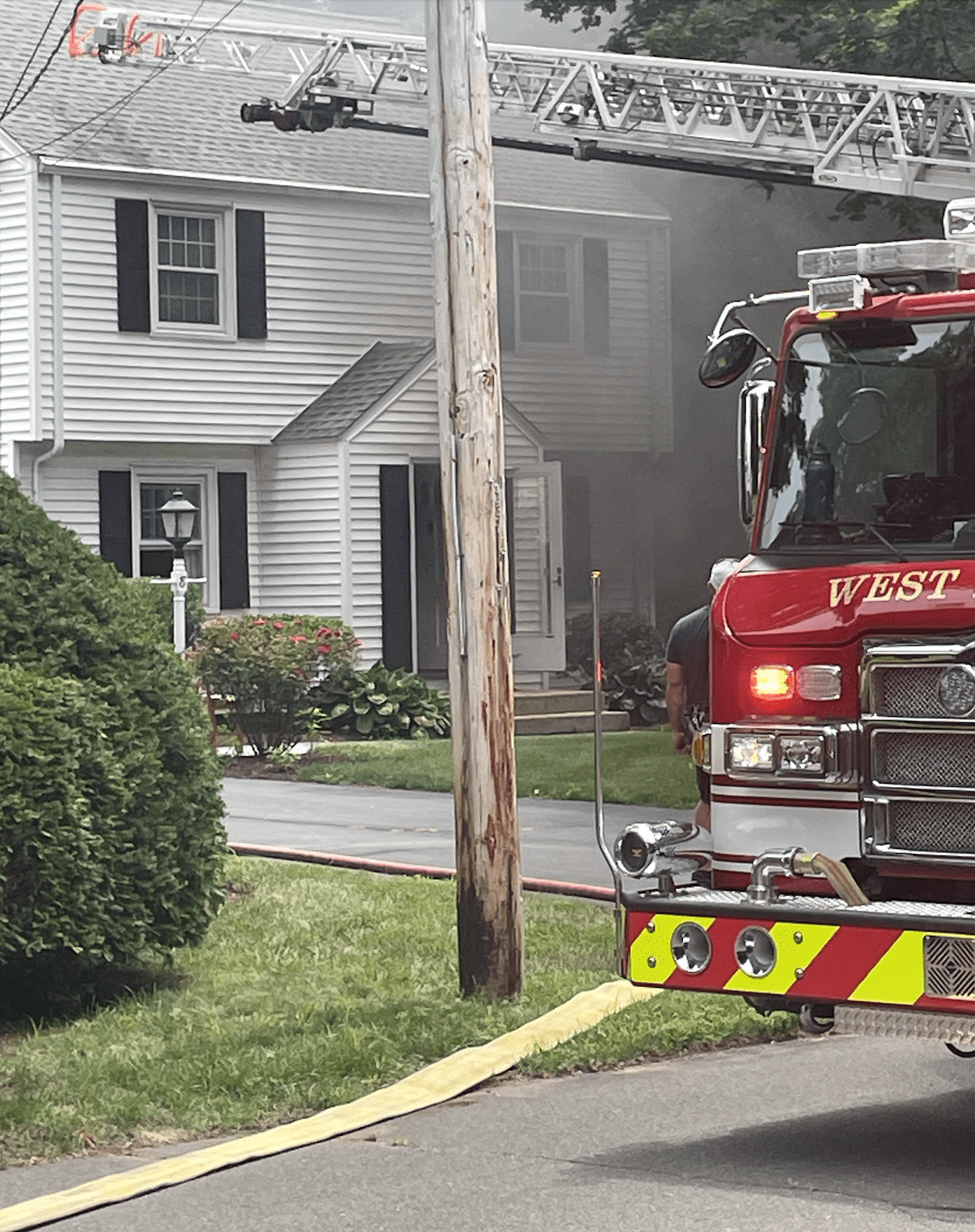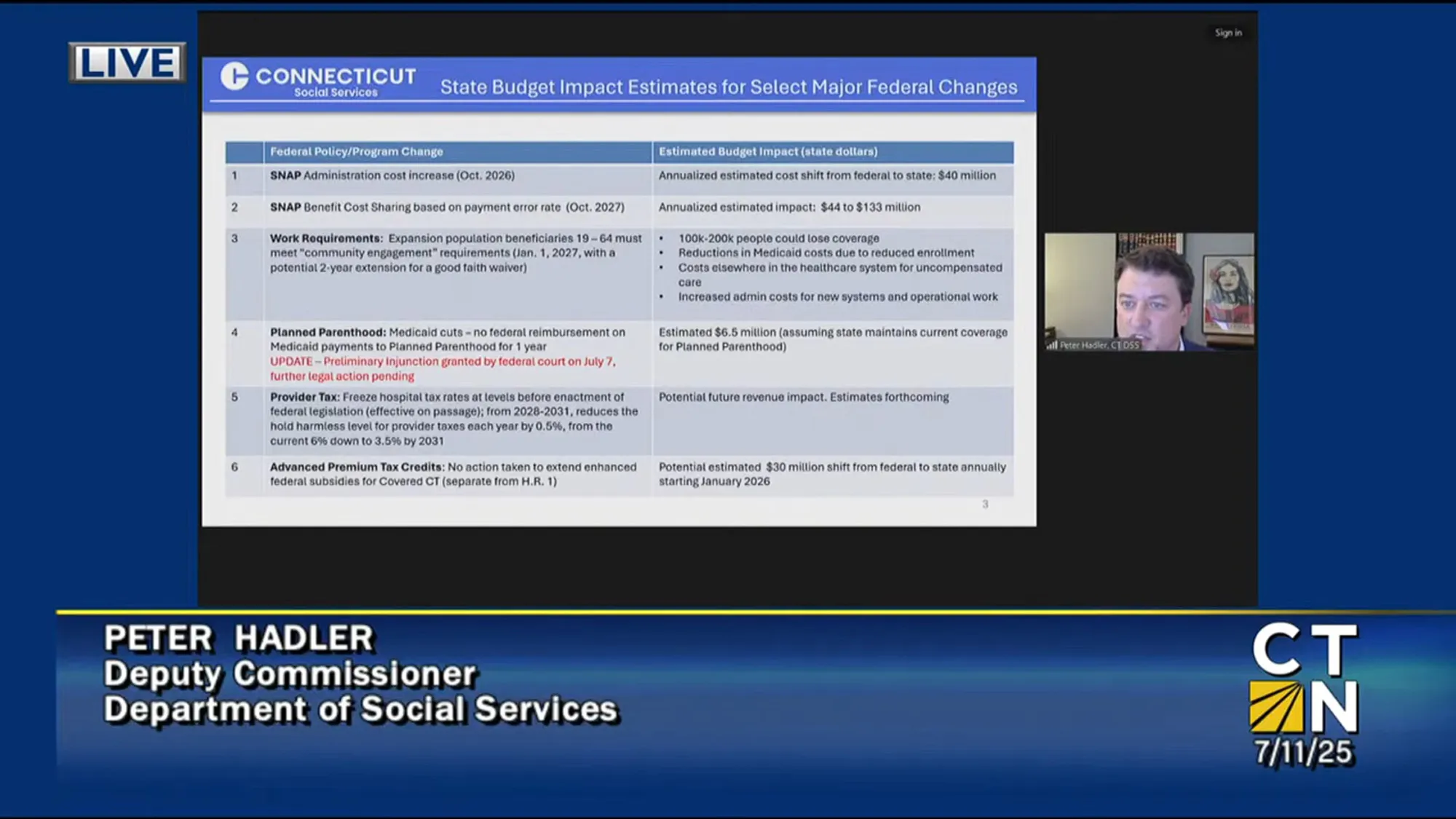West Hartford Teacher Honored with Presidential Award for Excellence

Audio By Carbonatix

Lori Durocher. Courtesy photo
Lori Durocher, a kindergarten teacher at Norfeldt Elementary School in West Hartford, has been selected as recipient of a Presidential Award for Excellence in Mathematics and Science Teaching (PAEMST).
By Ronni Newton
A Norfeldt kindergarten teacher is one of just 117 educators nationwide selected to receive a Presidential Award for Excellence in Mathematics and Science Teaching (PAEMST) – the nation’s highest honor for K-12 teachers in the fields of science, technology, engineering, mathematics, or computer science.
Lori Durocher, who has been an educator for more than 30 years and has taught kindergarten at Norfeldt for more than 25 years, was chosen as Connecticut’s awardee in the science category – a subject she loves and for which she works to foster a life-long love among her students, incorporating scientific concepts into virtually everything in the curriculum. She was nominated by Norfeldt Principal Jen Derick.
“I am so very proud to be receiving this award for a number of reasons,” Durocher told We-Ha.com. “First of all, I am so very proud to represent Norfeldt School – the little school with a big heart. I have the privilege of working with amazingly talented colleagues and supportive administrators who accept and encourage my love of kindergarten. I am so very proud to represent the town of West Hartford for whom I’ve worked for the past 26 years. Finally, I’m proud to accept this award as an early childhood educator,” she said.
“If you look at the recipients of this award, in many years past and in this current award cycle, you will see very few early childhood education professionals represented. I am so pleased that the White House is recognizing the important role that early childhood educators have in motivating and teaching the subject areas of science and engineering to our youngest learners. It is at this very young age when children are so very inquisitive that we must ignite the fire of excitement when thinking of science and engineering. I am also proud to represent early childhood as the face of our early childhood classrooms has changed tremendously over the past six to eight years. The students are engaged in thought-provoking science and engineering challenges, reading, writing narratives, studying civics, tackling math concepts, and so many other important areas of study.”
Science is a required subject in West Hartford’s kindergarten curriculum, Durocher said, but she goes beyond that to integrate science into many other areas. “We have three major units in kindergarten that the children are taught but more importantly they have a chance to experience the scientific method through which they can experiment and draw their own conclusions about specific topics of study. In addition to our curriculum I also provide the students in my class with a STEAM center (S for science, T for technology, E is for engineering, A is for Art, M is for math). In this way, the children are able to explore many different science and engineering concepts in addition to their daily curriculum targets. I find this is one of the students’ favorite parts of our classroom as it promotes exploration, open-ended thinking, and the freedom to try out many of their hypotheses.”
Her own excitement about science is contagious, Durocher said, and inspires the children to test out their own theories. “Running a classroom with an inquiry-based model and encouraging open ended thinking leads my little learners to a place where they feel safe every day taking risks and in turn, making new discoveries.”
Durocher said her students are currently creating “how to” books in their writer’s workshop, which includes writing and illustrating specific steps to sequence the events of a particular topic – in this case recipes.
“This is the perfect opportunity for the children to experience firsthand changes in states of matter as many of our liquids turn to solids, solids to liquid, or even liquid to gas. So 21 little scientists are actually having writer’s workshop and wanting to draw/diagram in their scientific journals at the same time. Their interest level is high and they can’t wait for the next writer’s workshop and science exploration time.”
She shared how she has integrated science into the math curriculum as well, while building three-dimensional shapes and trying to create the number of faces on a cube.
“We tested different materials such as toothpicks and marshmallows to see if we could build a cube. The children found that the marshmallows did not hold up the toothpicks and would flop within minutes of creating the cube shape. They got frustrated and wanted to fix the problem. Someone wanted to change the marshmallows to a different kind of candy while others theorized that it would be better for us to leave the marshmallows out a day and let them get harder. So that is what we tried the following day– to rebuild the 3-D shapes (cube and the pyramid specifically) using one-day-old marshmallows. Indeed our little kindergarten scientists were correct and the 3-D shapes were not only easier to construct but also were able to stay in the shape of a cube and pyramid for a longer period of time as models,” she said. “It is through this constant exploration and open ended thinking that the children live and breathe science each and every day in the classroom.”
Her kindergarten students often come up with ideas they want to test out that were not part of the original lesson. “However, being open to children’s inquiries is what true learning and exploration is all about and every good teacher follows the lead of that teachable moment and capitalizes on it,” she said. “So many wonderful ideas that the children have or said ‘I wonder,’ have turned into actual experiments we test.”
It’s something she encourages, allowing for open exploration and testing out various hypotheses – and that in turn helps the students develop important skills and work habits that cross over into science, and that will help them succeed in school as a whole.
Durocher has been the recipient of six grants awarded by the Foundation for West Hartford Public Schools to support her enrichment work – four of them related to science. She’s been a Teacher of the Year finalist twice in West Hartford, a district Seesaw ambassador, an active member of the Faculty Advisory Committee and Technology Committee, and helps shape many aspects of kindergarten curriculum, incorporating science and engineering applications across multiple disciplines.
Her official biography on the PAEMST website notes: “Developing innovative science adventures that appeal to young children and opportunities through which students work collaboratively to theorize, construct, and test hypotheses are hallmarks of Lori’s teaching. By mentoring educators new to the field, working with university teacher education programs, presenting at early childhood education forums, and mentoring early childhood student teachers, Lori brings a unique perspective and renewed sense of energy and excitement to science instructional practices.”
She teaches in a full-inclusion program that includes students with intensive academic needs, and students of all abilities work collaboratively, learning from each other.

Lori Durocher (left) with Norfeldt Principal Jen Derick. Courtesy photo
“I am deeply appreciative of the inspiration that America’s teachers and mentors provide every day to support the next generation of STEM professionals,” President Joe Biden said in a press release announcing the honorees. “The dedication these individuals and organizations have demonstrated to prepare students for careers in STEM fields, during what has been a difficult time for teachers, students, and families, plays a huge role in American innovation and competitiveness. The work that teachers and mentors do ensures that our Nation’s children are able to unlock — for themselves and all of us – a world of possibilities.”
“We would like to extend our congratulations to you and to others within your district who fostered this outstanding teacher,” said Dr. Diana Elder, director at the Division of Human Resource Development for the National Science Foundation, which administers PAEMST on behalf of the White House Office of Science and Technology Policy.
Durocher said the PAEMST application process was thorough and multi-faceted, and included an unedited videotaped lesson of her teaching science to her kindergarten students, multiple letters of recommendation, 15 extensive essays related to her lesson and how she teaches science to her students, and photographs and examples of student work. She also needed to share her method of assessing students as well as the efficacy of her lessons.
“I had essays that were specifically focused on how I communicate with families and how I help parents/guardians to better understand the educational content that their children are participating in. They were essays that specifically addressed how I make science experiences equitable for all students with regards to students who have 504 plans, learners who have IEPs, students who speak multiple languages, and children who have experienced social trauma,” she said.
Durocher will be honored during a virtual celebration planned for later this month, and will also receive a certificate signed by President Biden and a $10,000 award from NSF. She will also travel, all-expenses-paid, to an in-person awards ceremony in Washington, D.C. at a future date. Through the program, she will also have the opportunity to build lasting partnerships with colleagues throughout the country.
“Being selected by the White House for the PAEMST Award for doing something that I love is truly an honor; an honor that was made possible with the support of my family, school community, and my students,” Durocher said. “It gives me a sense of validation for the hard work and educational risks I take in the classroom when developing a love of learning for our nation’s youngest students. Winning this award adds a renewed excitement for inspiring children to be the best they can be. It also inspires me to pursue my professional dreams.”
Mallory Emmons, a teacher at The Peck Place School in Orange, was also a PAEMST Connecticut honoree this year, receiving the award for mathematics.
PAEMST was established in 1983, and is the highest award kindergarten through 12th grade mathematics and science (including computer science) teachers can receive from the U.S. government, according to the news release. The criteria alternates from year to year, and this year teachers in grades K through 6 were honored.
Durocher earned her B.A., magna cum laude, in elementary education with a minor in psychology and an M.Ed., magna cum laude, in early childhood education, both from Southern Connecticut State University.
Like what you see here? Click here to subscribe to We-Ha’s newsletter so you’ll always be in the know about what’s happening in West Hartford! Click the blue button below to become a supporter of We-Ha.com and our efforts to continue producing quality journalism.



